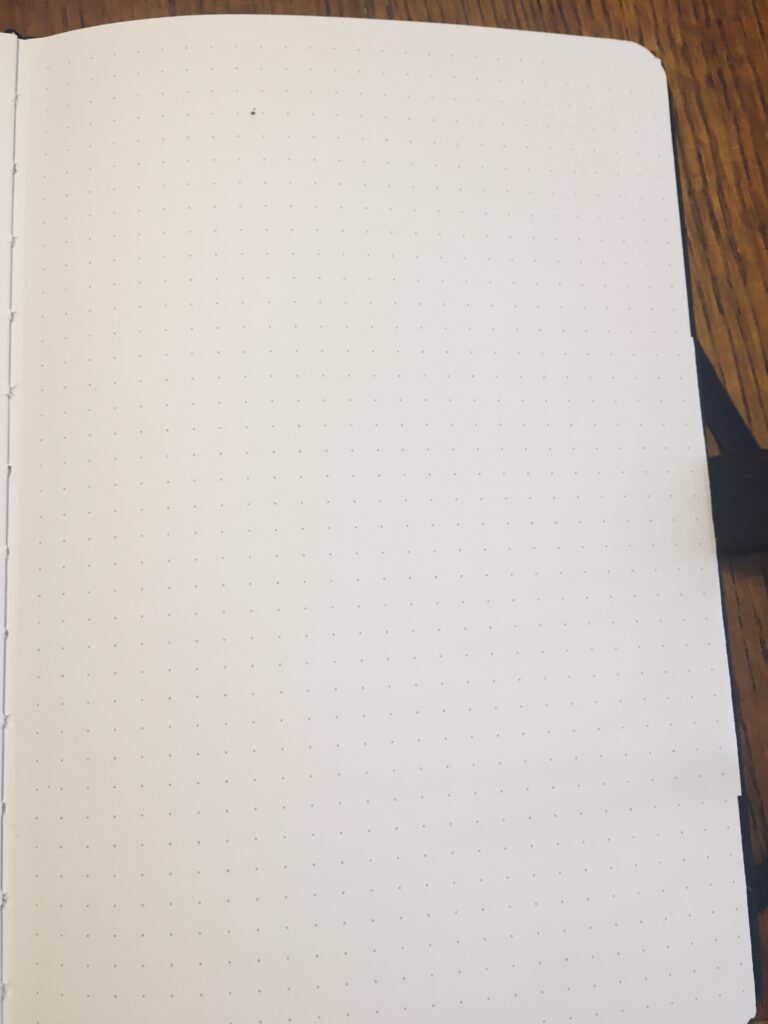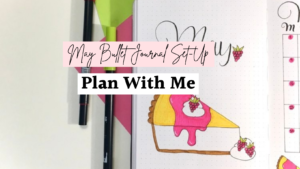When you first start bullet journaling, it can seem a bit odd that everyone is using journals with dots. Why do they not just use lined paper or blank pages? Why do they spend so much money on journals with dots when they could use a cheaper journal? The answer is simple. Bullet journals have dots because they provide a guideline for straight and equally-sized lines. When bullet journalers are trying to make their pages, it is easier to create aesthetically pleasing spreads when everything is aligned.
Background of the Bullet Journal and Its Dots
Ryder Carroll, the creator of the bullet journal, started sharing his organization methods online in 2013. You can learn more about his journey at this link. If you go through some of his earliest videos on YouTube, you can see that the original bullet journal was not crafted with dotted pages. Instead, Carroll is using a notebook with square paper. The square paper works in the same way as the dotted pages. It can be used to guide the lines in the journal.
After the bullet journal went viral, he worked together with Leuchtturm to create the bullet journal you know now. In Ryder Carroll’s videos after 2015, the bullet journal used has the dotted paper. The dots are there to fill the role of the square paper without having the lines to disrupt the design. Fundamentally, the dotted paper is intended to help with organization. If you want to go check out the Bullet Journal channel, you can see their content at this link.
How to Use the Dots
The dots in the bullet journal can be used to write all of your lists or anything else. You will not have to worry about crooked lines. If you are taking a more minimalist approach, you might only need the dots to keep your writing straight. However, lots of bullet journalers need lines for design purposes.
The dots are typically used for creating lines. If you are trying to make boxes or to separate sections from the others, you will very likely be using those dots to make lines. One popular spread to help organize these dots is the Grid Spacing spread. This spread splits the page based on how many dots there are. This page allows for fast access to how to organize a page without having to count the dots every time.

The dots are typically connected using a ruler to ensure the lines are straight. Essentially, they help guide how the ruler should be angled. The dots can also be used to see how long the line should be based on how you are organizing. In effect, the dots are there to make your spreads more symmetrical and uniform (which makes sense when you are aiming for organization).
Bullet Journaling Without Dots
As I always say, your bullet journal is your own. There is no need for you to confine yourself to one way to bullet journaling. Minimalistic bullet journalers do not require the dotted lines if they only have the intention of using the journal for keeping track of their lists and to-dos. You can easily use a much cheaper lined notebook. Lined notebooks still provide structure and are just as effective.
As Carroll showed, square paper is a great alternative to dotted paper. You can create lines as well as you can with dotted pages. It is also much cheaper to get a square paper notebook compared to a bullet journal. However, the lines from the square paper can be distracting and in the way of your designs.
The dots in bullet journals are meant to help guide you with your lines. They make your lines straighter and uniform when you are creating your spreads. If you want to learn more about bullet journaling, check out my bullet journaling posts.








